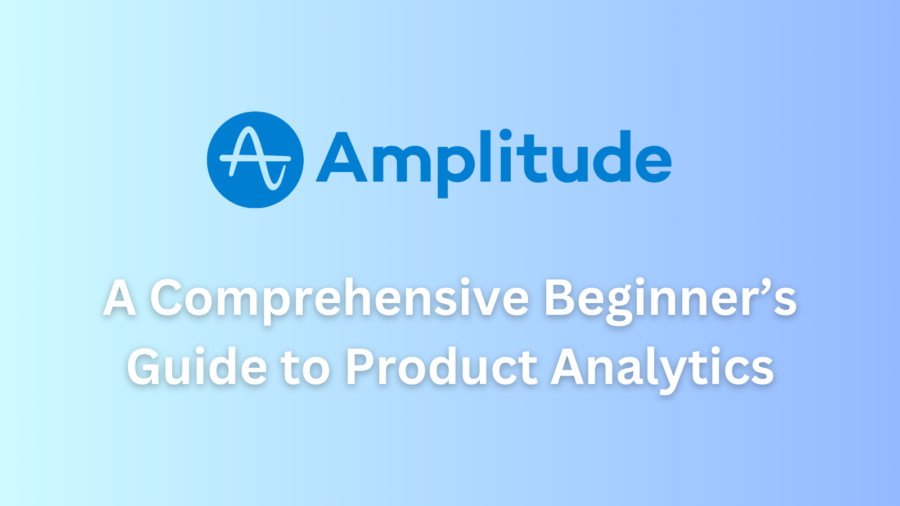Introduction
Understanding user behavior is crucial for success in the rapidly evolving landscape of digital products. That’s where Amplitude comes into play – a powerful product analytics tool that empowers businesses to make data-driven decisions. In this beginner’s guide, we’ll delve into the fundamental aspects of Amplitude, exploring its features, functionalities, and how it can be leveraged to gain actionable insights.
Understanding Amplitude: Unveiling the Core Features
Amplitude is not just a tool; it’s a comprehensive analytics solution designed to help businesses decipher user interactions with their products. The platform provides a range of features, including event tracking, user segmentation, and funnel analysis.
Event tracking is the bedrock of Amplitude’s capabilities. Defining and tracking specific events within your product gives you granular insights into user actions. Whether clicks, sign-ups, or purchases, Amplitude enables you to monitor and analyze these events, identifying patterns and optimizing the user experience.
User segmentation is another powerful feature that sets Amplitude apart. It allows you to categorize users based on specific attributes or behaviors. For instance, you can create segments for first-time, power users, or those who abandoned the checkout process. This segmentation proves invaluable when tailoring marketing strategies or improving features to cater to distinct user groups.
Funnel analysis is a core aspect of measuring user conversion. Amplitude enables you to create and analyze funnels – a series of events that users go through. This could be the path from sign-up to subscription or from product view to purchase. By understanding where users drop off, you can pinpoint bottlenecks in your user journey and optimize accordingly.
Setting Up Amplitude: A Step-by-Step Guide
Now that we’ve explored the core features let’s dive into the practicalities of setting up Amplitude for your business. The process is straightforward and begins with creating an account on the Amplitude website. Once registered, you’ll be prompted to create your first project, defining the product or app you want to analyze.
Integration is a critical step in utilizing Amplitude to its fullest potential. The platform seamlessly integrates with various third-party tools and platforms, such as mobile apps, websites, and more. For instance, if you’re using a mobile app, you can instantly integrate Amplitude’s SDK (Software Development Kit) to capture user data.
As you integrate Amplitude with your product, consider the events you want to track. These events should align with your business goals and user interactions with your product. Carefully planning and implementing event tracking ensures that the data you collect is meaningful and directly contributes to your analytical objectives.
Once the setup is complete, take advantage of Amplitude’s customizable dashboards. Tailor them to showcase the metrics that matter most to your business. Whether it’s user retention, conversion rates, or engagement metrics, having a personalized dashboard ensures that you focus on the data relevant to your goals.
Interpreting Amplitude Data: Turning Numbers into Actionable Insights
Amplitude isn’t just about data collection; it’s about transforming raw numbers into actionable insights. As you start receiving data, the platform’s analytics tools come into play. One notable feature is cohort analysis, allowing you to track groups of users who share common characteristics over time.
Cohort analysis is powerful for understanding user retention and engagement. You can identify trends and patterns by grouping users based on sign-up date, acquisition channel, or any other defining factor. This insight is invaluable for refining your marketing strategies and optimizing user onboarding processes.
Another key aspect of data interpretation in Amplitude is utilizing behavioral trends. The platform allows you to analyze how user behavior changes, helping you stay ahead of evolving preferences. For example, if there’s a sudden drop in engagement, you can investigate the cause and implement corrective measures promptly.
Amplitude’s predictive analytics capabilities add an extra layer of sophistication. By leveraging machine learning models, the platform can forecast user behavior, allowing you to address potential issues or capitalize on emerging trends proactively. This forward-looking approach positions your business for strategic decision-making.
Optimizing User Experience with Amplitude: A Practical Approach
User experience (UX) optimization is a continuous process, and Amplitude provides the tools needed to refine and enhance it. One effective strategy is A/B testing, which allows you to compare two or more versions of a feature or page to determine which performs better.
Amplitude’s A/B testing functionality enables you to set up experiments seamlessly. Whether you’re testing different call-to-action buttons, user interface variations, or even entire user flows, the platform provides robust statistical analysis to determine the most effective changes. This iterative process ensures that your product evolves based on real user data.
Personalization is another dimension of UX optimization that Amplitude facilitates. With user segmentation, you can tailor experiences for specific user groups. For instance, a personalized onboarding journey for new users or targeted promotions for loyal customers can significantly enhance overall satisfaction and engagement.
To refine the user experience further, leverage Amplitude’s retention analysis. By understanding how often users return to your product, you can gauge the long-term appeal and stickiness of your offering. If retention rates are declining, it signals a need for adjustments in features, messaging, or overall product strategy.
Conclusion: Empowering Business Growth with Amplitude
In conclusion, Amplitude isn’t just a tool; it’s a catalyst for data-driven growth. From setting up the platform and integrating it with your product to interpreting data and optimizing user experiences, Amplitude provides a comprehensive solution for businesses aiming to thrive in the digital landscape.
By embracing Amplitude, businesses can gain a profound understanding of user behavior, identify opportunities for improvement, and make informed decisions. As the digital ecosystem continues evolving, a robust analytics solution like Amplitude becomes indispensable for staying competitive and ensuring sustained success.


